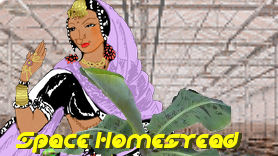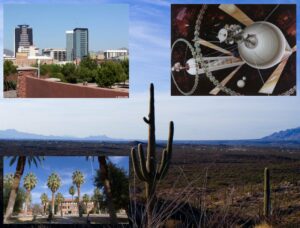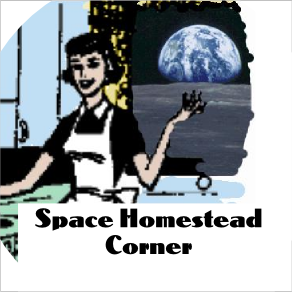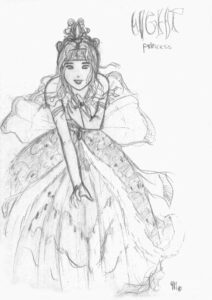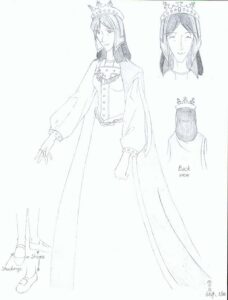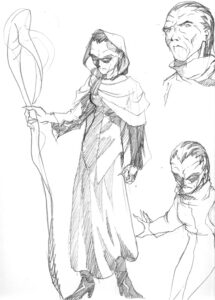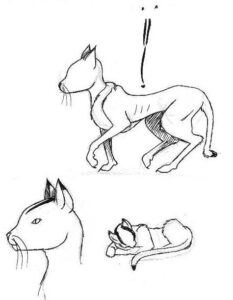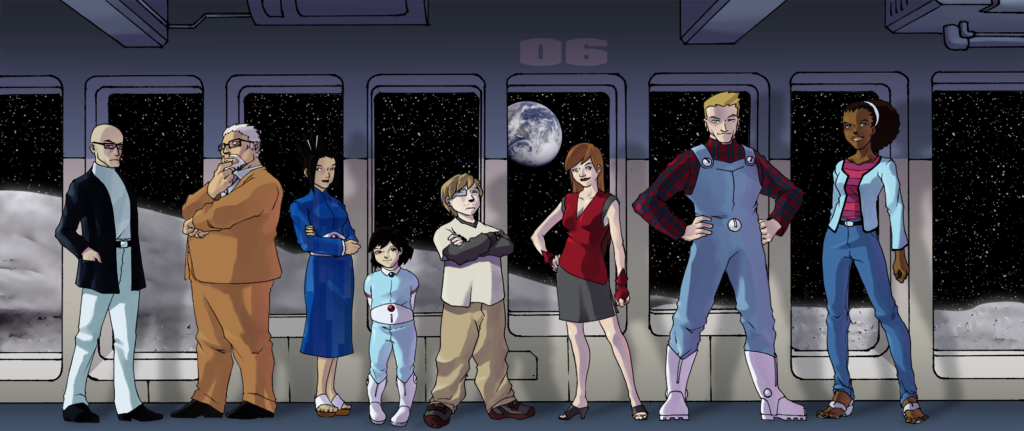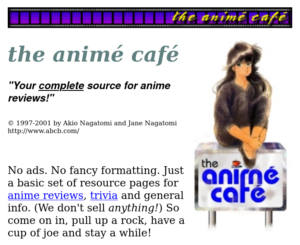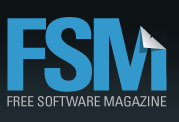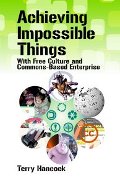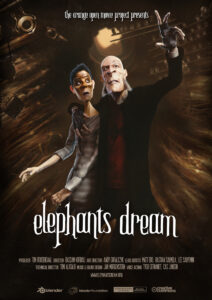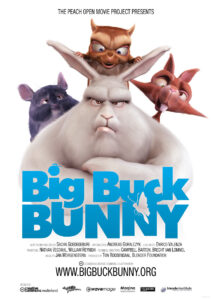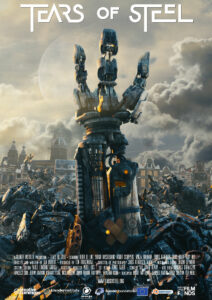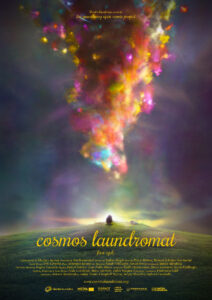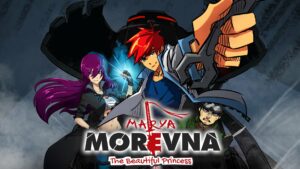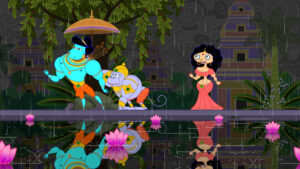It’s been well over ten years since our project launch on Kickstarter, which is probably as good a date as any to call the “beginning” of the “Lunatics!” Project, although its origins actually reach back in various ways as far as 2000 (the germ of the story) or 2009 (the idea that we might actually be able to produce it as an open movie) or 2010, when I posted the first essays into the project in my Free Software Magazine column.
This seems like a very good time to reflect on what we hoped to achieve with this project, what we have achieved so far, what went wrong, what went right, and what we hope to achieve in the future.
This is Part 1, which addresses the seeds of the idea and the personal history that led us to it.
Origins
Inspirations and precursors of the project, prior to 2010
International Space Development Conference 2000, Tucson, Arizona
Creatively, the notion of the “Lunatics!” story was based on discussions that arose between Rosalyn and myself after the ISDC 2000 in Tucson, Arizona. One of the meetings addressed questions about the practical preparation of colonists for a space colony (Moon or Mars or whatever) — for people who actually wanted to live there. This raised a number of social questions for us:
- What were such potential, self-motivated space colonists like, temperamentally?
- How would such people (and their frequently large personalities) work effectively in groups?
- How does the need for colonizing another world affect a person’s outlook?
- Who were the political players who would shape how colonies worked out?
- Would it be safer to build colonies on other worlds as we have on Earth, in very small, nearly self-sufficient cells? I.e. should space colonies be essentially thought of as homesteads or farms, rather than corporate-controlled city-states as seems to be imagined by most of the planners in the space community?
This 2000 conference also included a tour of the Biosphere 2 facility, which was an attempt to build a space-colony-like environment here on Earth, using a purely biological regeneration system (which didn’t fully pan out, but that’s another story). This was an inspirational model for what a colony ought to look like and what its true size versus population would probably have to look like.
We also most likely met Elaine Walker for the first time at this conference. Her pro-space music track “Space Zine” has, of course, become our signature title music, as I felt it expressed the clash of aspirational and pragmatic issues in space advocacy which will carry over into space development. At one point, we attempted to sell her albums through our own webstore, though that didn’t work out as well as we hoped (Being an e-commerce retailer was not as simple as it looked!).
Of course, my interest in space and space settlement has been around since I was a child, as well as my love of science fiction — particularly realistic “hard SF”, though in fact, I like all kinds, including some outright fantasy.
The Space Homestead Corner (2000-2001)
The first product of this interrogation of the problem was the “Space Homestead Corner” that Rosalyn developed on our Anansi Spaceworks website. This was a column that focused on the domestic side of what living in a space homestead would be like, usually featuring some topic that could be explored here on Earth, under more normal circumstances. It opened with a tongue-in-check “50s housewife” image in front an Earthrise, and later columns appeared with a woman in traditional Indian dress, apparently tending plants in a Martian greenhouse. We’d intended to do more cover designs, with the same sort of juxtaposition, but these were as far as we got.
We were also discovering a lot of anime back then (we had moved to California, where it was a lot easier to find the videos to rent), and between these images and some stock anime characters, we found the inspiration for Hiromi Lerner (there was also a bit of a jab in the idea that the ideologue for the colony project would be the sort of geeky “weeabu” American white guy who’d want a Japanese wife, though this jab got softer in the retelling as we took the characters more seriously. Hiromi became a Japanese-American and herself from a family that produced space hardware, as we gave the character more personal agency and drifted away from the original joke). It also allowed us to have representatives from different space-faring nations’ traditions.
Rob Lerner, of course, was based on a lot of outspoken space advocates (and advocates for other causes) we’d met over the years. Of course, Rosalyn’s own father, Rev. Charles Hunter, was a preacher and an active part of the 1960s civil rights movement, who never gave up such advocacy activities in his life.
We quickly decided the colony couldn’t really just be one family, because of the complexity of running even a minimal “homestead” on the Moon, so we settled for two family units living under one roof, with different specializations. We figured at least one person had to actually know how to farm, and we wanted a Russian character as well as someone with business sense, since this project would obviously be hell to finance.
Adding an artist and a scientist as hangers-on was a much later development, and none of the characters had names at this point, of course. Those came later, although they are all kind of plain names in their respective languages.
However, though we could imagine the situation, characters, and story, we weren’t sure what to do with it. Would it be a web comic? A short story collection or novel? Animation seemed ideal, but also unattainable.
Well… How Did We Get Here?
This part gets a bit autobiographical, because the particular ways we coped with the years from 2000 to 2010 gave us a lot of essential experiences and skills, without which, we probably wouldn’t have had the idea to create “Lunatics!”, much less believed we could attempt it. During this time, we swapped between “bread winner” and “home maker” roles multiple times, as well periods where we both had to do a little of both, and we hopped from one major project to another, partly out of necessity and partly out of the desire for the next adventure and hopefully finding some way to reach our full potentials. Of course, this also meant we both experienced highly “broken career paths”, which are not generally seen charitably by employers, and which meant a lot of financial hardship. On the other hand, it has also given us both unusual sets of skills.
Discovering Debian GNU/Linux and Free Software (1999-2002)
In 1998, I had started work for a small research company in Pasadena, California, called “Extrasolar Research”. Astronomer Susan Terebey had converted her grants from her JPL research to NASA contracts and set up an independent company to fulfill them. She needed an assistant, and that was me. I think the reason I got this job was because I was genuinely excited by the whole concept of working for a small startup company doing astronomical research. And the job required me to have a diverse skillset, which I did, including a lot of working-class skills that I grew up with.
I started the job working out of her living room and living in a hotel room with my young family, freshly moved from Texas. We pretty quickly found a rent house and while we weren’t exactly “comfortable”, due to the high cost of living in California, our basic needs were met. And we moved Dr. Terebey’s office out of her living room and into the attic office of a professional building that had been converted from a small craftsman house in the historic downtown area of Pasadena. I was exceptionally well-prepared to help move the office, owing to having spent my last three months in Texas loading packages for RPS (Now “Fedex Ground”) for delivery runs (I hadn’t thought to put that on my resume), so I had really built up a lot of upper body strength in a short time (it didn’t last, but it was handy at the time!). Fun fact: RPS had twice the package weight limit (150 lbs) as UPS (75 lbs), and lots of shippers take advantage of this!
In fact, my working-class background and comfort with DIY tasks helped me a lot in that job. At one point, I broke a stalemate with an internet service contractor who didn’t want to run lines in our building by simply running the lines myself. I did manage to step on a nail in the process and dropped a small flashlight deep inside the passage where I couldn’t retrieve it, but I got the wire run and we got broadband into our office!
My job at Extrasolar could be roughly divided into three broad categories: astronomical research (I was essentially a “research assistant”, mainly in charge of reducing observational data from the Hubble Space Telescope); computer work (IT maintenance for a off-brand Solaris workstation, a couple of Apple desktops, laptops, and so on, and also maintenance of the company website); and administrative assistance, which included keeping the meticulous expense records required for NASA contractors, dealing with suppliers (including our ISP), answering the phone, and managing PR, which turned out to be a lot more interesting than I expected it to be, when we briefly became front-page news at NASA for our research on a binary protostar called “TMR-1” (FWIW, the 1998 images you see on the link were prepared by me from the NICMOS data).
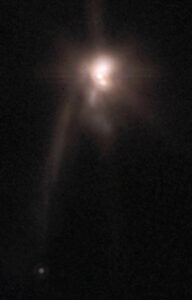
The administrative and PR work really stretched me and gave me a lot more confidence. At one point, I actually wound up talking to a high level executive at Silicon Graphics, trying to work out a deal for us to not get our website hammered if the PR got out of control and we got “Slashdotted” as had happened recently with NASA’s Pathfinder lander on Mars. Our ISP charged us by traffic volume at that time, so that could’ve become a very large bill. The point though was that, introvert though I am, I managed to step up to that kind of work, and that made me feel a lot less afraid of it in the future. In the end, most of the traffic went to the much-better-funded Space Telescope Science Institute site, which mirrored some of our content, and we only got a mild surge in traffic. We did get our ISP to waive traffic charges in exchange for an advertisement for their hosting services.
In maintaining the Solaris workstation, I got the opportunity to learn about the GNU utilities and free software in detail. This was when I first actually read the GNU General Public License and also Richard Stallman “Free Software Manifesto” and other works on the subject. I was also heavily influenced by Eric Raymond’s “Cathedral and the Bazaar” series, which really delves into the pragmatic aspects of why free software works. At the time, my main mission was simply to get software working, but I wanted to understand why this free software was so well made (generally better than the proprietary utilities they replaced).
I was also intensely interested in the way that Linux held its own against an onslaught of attacks from Microsoft that had melted every corporate competitor to butter at that point. Clearly this strength lay in the open process and lack of a central corporate owner for Linux and open source software.
It seemed to me at that time that space development had a similar problem, coping with the “500-lb gorilla” of NASA and the space-industrial-complex contractors, who existed mainly to milk the program for money, rather than make real progress in opening space, and that an open approach might be the way to break through.
But I was hesitant to tackle that problem directly for various reasons — and mainly that I just had no standing in any kind of space industry or the money to consider a start-up of that kind. So I focused instead on other (much cheaper) ways open source production could be used, and that led me into game arts. I had noticed that games for Linux weren’t nearly as rich as those available for Windows, and often lacked artistic style. There were also a lot of other people musing about how open source and free-licensed sensibilities could be applied in the arts — a major consensus at the time was that they just couldn’t: that in fact, it was the special nature of software that made the GNU/Linux approach possible. This was two years before the Creative Commons was founded, you’ll remember!
We’d really enjoyed Sierra’s graphic adventure games, which were all essentially what are now called “puzzle games” or “interactive fiction” or “visual novels” (more recently). This was a genre that was going out of favor, to be replaced by “first person shooters” and other open-ended games, which generally had less story, though often better game play.
Laboratory Manager, Caltech Biology Department (2000-2001)
My job at Extrasolar Research Corporation was our only income, but NASA contracts are on fixed terms. Mine wasn’t renewed, and that meant that we were in need of income. Rosalyn had been staying home for the kids (our younger son was only two years old then). Nevertheless, she got a job working as a Biology Lab Manager at Caltech, and I became the “designated house spouse” (It was during that time that I started working on the Light Princess project).
Her work at Caltech challenged and stretched her in many ways. She needed to develop software tools to help with the project. And she also demonstrated some useful out-of-the-box thinking when she hired staff help from the nearby Pasadena City College, instead of simply relying on Caltech student workers, who generally seemed to regard washing laboratory glassware as beneath them.
It seems there was some kind of mismanagement, though, because the lab she worked for ran out of money, and then she lost her position there, which again sent both of us out looking for work. I managed to find the “software consultant” job at Caltech (which I described above), and so Rosalyn went back to housework for a time.
The Light Princess (2000-2002)
This was also about the time Sourceforge was founded, and as these things came together, we decided to start a game project focused on the artwork, rather than starting with software and game play. For a story, we turned to George MacDonald’s “The Light Princess”, partly because it was out of copyright and partly because its structure suggested a “scavenger hunt” type of game play, as well as very amusing visual effects.
Rather than hanging out in programming forums trying to figure out who also had a talent for artwork, we looked further afield on sites dedicated to art, fan art, and particularly anime-styled art from that time. In the end, we recruited four different artists (Marc Yang, Katherine Chi, Corene “Nezumi” Werhane, and Daniel Fu) who were willing to release under a free-license for a free game project, clearly demonstrating that the “special nature of software” argument was not valid. Certainly there were artists also interested in free culture projects. The work was all released under the terms of what seemed like a promising copyleft art license at the time, the “Design Science License”, conceived by Michael Stutz.
We never produced a game, but we did develop a lot of character art, several game play concepts, a map of level one (and a clever hack for turning the map into a programmed network of “rooms” using X-Circuit’s net-listing feature), and we learned a lot about managing an artistic team under open licensed volunteer terms. It’s tricky to not step on anyone’s egos. I had at the time figured the workload would make it essential to have more than one artist, but I discovered that a major obstacle is that the artists tended to see it as a competition, each wanting the creative control over character design.
Sadly I’ve last touch and even any means of tracking three of the artists: there is an artist working today under the name “Katherine Chi”, but she is clearly too young to be the Katherine Chi I knew. Marc Yang seems to have vanished off the face of the Earth. I did purchase a piece of Nezumi Werhane’s art at an SF convention art show a few years ago, but never got the chance to meet her again (If any of you folks are reading this, please give me a ping! I’d love to catch up — also, if anyone ever continues this project, they’ll probably want to update the licensing to something compatible with Creative Commons, and I’d need permissions for that).
Daniel Fu, of course, I did keep track of. He lives quite a bit closer to me, and I was able to meet with him in person at one point on an early comic project. I immediately thought of him when I was looking for a character designer for “Lunatics!” and of course, he did that work for us, funded by our first Kickstarter in 2012, producing beautiful character concepts and modelsheets for all our main characters.
Anime Cafe, The Light Princess, and Linux (1999-2004)
Our anime obsession was continuing, and being a mom, Rosalyn contributed to the “Anime Cafe” — an online site, which featured among other things, reviews for parents concerned about what their kids would be watching. The reviews were fairly objective, but noted specific issues we knew that American parents would be concerned about. The site also maintained a forum for anime fans, and Rosalyn joined. She eventually become one of the site’s principle administrators and got to know the owner of the site, Jane Nagatomi, pretty well (online). I eventually also became a moderator, and this was a place where we really honed our interpersonal “soft skills”, particularly in online situations. The site was uncommonly well-moderated and polite, a reputation we were very proud of. As far as I know, the site still continues, though we haven’t been active on it in over a decade.
We also had lesser roles on another popular (and somewhat less well-behaved) anime forum, called Anime Nation, associated with an online anime DVD rental and store (similar to the business model Netflix later became known for, before they migrated to primarily being a streaming service).
Sci-Apps at Caltech/JPL Infrared Processing and Analysis Center (2001-2003)
The Light Princess project went into a hiatus in 2002, when I was hired at JPL as a “Software Consultant”. My job was essentially to wrangle all the ill-behaved software the science team wanted that the IT Department did not want responsibility for.
Astronomy has relied on computer programs longer than most fields of scientific endeavor, owing to the unfortunate reality that we cannot control the orientation of the subject matter to make all the angles turn out neatly. This means that most astronomical modeling problems involve not only tough math due to the physics, but also due to the awkward geometry of observations — everything tends to be at oblique angles that have to be compensated for, and that adds lots of tedious math to the interpretation of data.
Most of that software was written by scientists themselves, with little help from the disciplines of programming we know today, and in fact, largely before most of them were invented (or at least widely applied). Thus we have numerically-efficient FORTRAN code, but it does not fit neatly into modern programming paradigms, let alone modern operating systems. Getting it to run smoothly on Solaris or Linux platforms was a chore, and in 2002, that chore was mine. I created a small distribution, which I called “Sci-Apps” and made it available to the science team.
I was also really into Urusei Yatsura at that time, and so, wisely or not, named the SciApps distributions after UY characters, though I was careful not to use any of the copyrighted artwork. The last one I made was “Benten”. It was a very fanboy thing to do, but there we are. The disturbing thing is that no one really seemed to think this was odd. It’s a nerdy crowd at JPL…
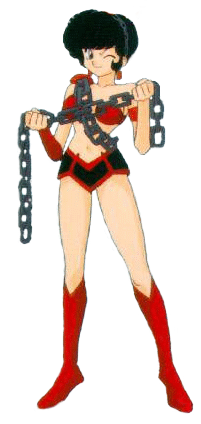
Regrettably, it was not long after that that our personal housing situation in Pasadena, CA became awkward, partly due to the birth of our daughter, and the job didn’t really pay enough for us to move into a house that would suit us. We’d also accumulated quite a bit of debt, due to the periods of unemployment (and high rent) we’d endured over the last few years. My income wasn’t bad, but it wasn’t enough to just clean all that up, either.
In the end, through some excellent negotiating by Rosalyn with Caltech and our previously having gone through all the legalities to establish Anansi Spaceworks as a business, we converted my job to a contracting position for a short period of time, and then moved back to Texas, working remotely for a time. We had imagined we might diversify clients and do this work for more people, but we didn’t find any, and eventually we used the tail end of the money to purchase land here in Texas to live on.
Well, they do say that “any landing you can walk away from is a good one”, and we were still standing (more or less), so we moved on.
I sometimes regret that decision, in the darker moments of my life since. Although the money was little in Pasadena, it was even harder to make ends meet here in Texas with my oddball set of skills, and there was a decent chance I could’ve been promoted to a better paying job at JPL proper. On the other hand, this also meant our kids were in easy visiting range with both sets of grandparents, and I think that was a lot better for them. And I wanted to be more independent, as it was clear I wasn’t going to be much more than a cog at JPL, even as much as I admire their mission.
However, the reason any of this comes into the Lunatics! story is that I maintained a set of oddball and rather ill-behaved applications, most of then open-source, for the purposes of astronomical research. This is not bad preparation for maintaining the similarly oddball and ill-behaved collection of open-source applications we need for multimedia development on Linux.
Oh, and Urusei Yatsura probably affected my taste in animated character design.
Free Software Magazine (2004-2011)
My background with free-licensed open source software (otherwise known as “free software”, particularly by the more ideological among its advocates) brought me to the attention of Tony Mobily, who recruited me as one of his early writers for his magazine project. He wanted to create a print magazine centered not around Linux per se, but around Free Software, and thus was born Free Software Magazine. I was a pretty vocal advocate for Free Software online at the time and had written quite a bit about it already, so I guess that was what brought me to his attention, though I’ve never really asked.
I stuck with FSM from its founding in 2004 to its winding down around 2010 in various ways. The print magazine market was deflating at the time, and the notion of selling the magazine in print format was dropped. For awhile there were digital issues, and then it became more of what we would today call a “blogging” site. I preferred the somewhat more professional-sounding name “column” to “blog”, suggesting that I was an actual journalist.
2005 FSM Article: Free file formats and the future of intellectual freedom (or Archive)
So far, proprietary formats have been maintained through a number of short-term tricks, but the advantages of free formats become clearer in the long run. Business and the computer industry have tended to be very shortsighted. However there are some important classes of technically proficient users with a much longer outlook, whose needs can only be met by free file formats. If we in the free software community want to see free formats take hold, we need to address the needs of these users. We need to do this in order to leverage their interest into long-term acceptance of free standards by the world at large. We also need to ensure free standards exist—because in many key areas they just don’t.
[My first article for Free Software Magazine was about an issue I’m still concerned about: keeping information readable and future-proof by making sure we have documentation and freedom to code and access the formats the data is stored in]
In any case, I got paid for writing articles, even if it wasn’t a lot of money. It was precious at the time, because we were struggling financially by 2004, when the money from the JPL contract ran out, though we had a little home out in the country here. It’s not much, and it’s still a maintenance nightmare, but it was great not paying rent anymore or having a landlord.
What I mostly did for FSM, besides the trivial opinion and advocacy pieces, was to explore the available software, learn how to use it, and then write reviews or tutorials for other people to use. I also reviewed a lot of non-software open source projects, which I regarded as being compatible with the ideological focus of a magazine specifically about the “Free” aspect of the software.
I also wrote a number of articles about the economics, ethics, and politics of Free Software. I always rejected the popular notion among many ideological advocates that “pragmatism” could be ignored in questions of ethics (to many, it’s essentially a dirty word). But to me, it has always seemed essential to the question.
It matters if there is no practical way to do a thing: we may admire abstract theories in a fantasy world where anything is possible, but any real ideology must survive contact with the real world to be considered useful. We cannot bring people back from the dead, so any ethical theory that demands we do so is pointless. And ethical theories that ignore this inability when deciding to put people to death are evil. The same applies to demands that we build a new Sun, move the Moon, or even terraform Mars — such things might be in our far distant future, but they are not of relevance to us in the here and now. Many of the safeguards of civilization exist because the beautiful abstractions of ideology simply do not fit the physical world we are obliged to live in. Yet, at the same time, it is not acceptable to ignore our ideals because of “the way things are” — we have obligations to act to make things better. Worse: the obsession with making things perfect has all too often proved to be nothing but an excuse for not making them better.
2010 FSM Article: Choosing and Using Free Licenses for Software, Hardware, and Aesthetic works (or Archive)
What is this “Free Culture” thing? What is “Free Software”? And how do I get my work out there? If you’re looking to participate in the “Commons”, you’ll need to get comfortable with the idea of free, public licenses and how to use them for your works. This won’t be hard at all, especially with this short guide, but there are different traditions that have sprung up around different kinds of works.
2011 FSM Article: Exploitation? Entrepreneurship, Capitalism, and Making Money on Free Software (or Archive)
Why is it that open source developers don’t feel “exploited”? Is it because they’re just naive or too desperate to notice? I don’t think so.
The truth is, they are all getting the product of the collaboration, and that is generally far more valuable to them than any money that might be made off of it. The main reason to contribute to the development of a piece of free software is that you want to be able to use it. Collaborating on its production is a cheap way to get that, especially if you are already a programmer.
I wrote a major series of articles dedicated to the notion of applying Free Software principles to other types of production, including what we’d now call “Open Hardware”, which I called “Towards a Free Matter Economy” (even I think that sounds a little pompous now, but it made sense to me at the time). From this, I created a book “Achieving Impossible Things with Free Culture and Commons Based Enterprise”, in which I discussed the idea of a new paradigm for large-scale organized projects, based on the concept of a digital “commons” which fit into a gap between corporate and non-profit production models. This was the only book ever released on “Free Software Magazine Press”, so it was basically self-published. I think I have actually sold only about five copies, although many digital copies of the PDF were downloaded from Archive.org (the only thing is, I have no idea if those downloads translated to anyone actually reading the thing — I have wondered).
Linux User & Developer Magazine (2005-2006)
For a brief while from 2005 to 2006, I served as “Deputy Editor” and “News Editor” for a glossy print magazine based in London (though I was still based here in Texas — this was 100% remote work). Had I been less desperate for work, I might’ve asked how I got such a high-level job so quickly on such a fancy publication, and avoided some heartache after this (and a personal bankruptcy).
Long story short: the management of the magazine ran a scam where they could bankrupt a shell company, avoid paying their editorial staff, and then continue right on publishing under the same name. The previous staff had been ditched, and that’s how I managed to get in so easily, with limited experience.
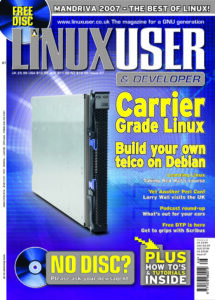
Still, I did get paid pretty well for several months work. Had I actually planned for the amount they really paid me, instead of the amount they actually owed me, according to my contract, I would probably still have taken the job. As it was, there was much bitterness and a lawsuit, though I got basically nothing out of it.
And I did intensely enjoy the work itself, which, once again, involved combing the internet for interesting projects to report about. It was through this job that I discovered a lot about how open source multimedia software had improved since I had worked on The Light Princess. Perhaps the most remarkable was the transition to open source for Blender — we had considered Blender on Light Princess, but at that time it was still a “non-free” software: free to use, but not open source, which wasn’t technically impossible for us to use, but not ideal. And of course, that was a much earlier version with an infamously arcane user interface that would’ve taken a lot of effort to learn.
This also led to learning about Open Movie projects. Among these were…
Blender Open Movie Projects (2005-2015)
The Blender Foundation, shortly after going to the free GPL license, also produced their first Open Movie. There has actually been a long tradition of computer animation companies (notably Pixar in the 1980s?) producing short films as a way to highlight software problems and drive development, as well as demonstrating their talents. They went on to produce two more open movies that were highly-influential on my plans for “Lunatics!”, with the fourth “Mango” project bringing up some of the same issues I wanted to address with our project in 2012.
The Orange Project (Elephants Dream – 2005) was primarily just a technology demonstration, showing the status of the first open-source edition of Blender. The Peach Project (Big Buck Bunny – 2008) was associated with major technical improvements, particularly relating to the fat, furry bodies of the characters. The Durian Project (Sintel – 2010) was more ambitious, associated with the new interface rewrite and scripting in version 2.5 of Blender, and was in my opinion, the first of the films to really succeed artistically, though the film ran longer than planned and strained the project. The Mango Project (Tears of Steel – 2012) demonstrated live-action filmmaking and visual effects workflow in Blender. Finally, the Gooseberry Project (Cosmos Laundromat – 2015) was intended to motivate development of asset management and collaboration for a feature-length film, though it ultimately failed at that goal (Blender Foundation moved on from there to creating the “Blender Cloud” membership site after that). In the process, however, several asset management systems were considered, and this research later helped us on “Lunatics!”
The Gooseberry Project was going on while I was working on “Lunatics!” already, but it’s notable, because preparations for it were already being made in 2010 to 2012, right before we launched.
In 2008, I briefly went back to The Light Princess and did a little bit of development work, thinking maybe it could be resurrected. I think this is probably when I discovered Jamendo as a source for free-licensed music. But by then, I just wasn’t really interested in the game concept anymore — developing that seemed way too much like work. I realized it had really been the creative artwork, story, and animation that really drew my interest, and I realized that I probably wanted to do something more like the Open Movie projects.
Morevna Project (2004-Present)
Konstantin Dmitriev’s “Morevna Project”, which was working to create an open source “anime/cyberpunk” retelling of an old Russian folktale, “Marya Morevna” (Or “Koshchei the Deathless”, named after the villain). I was inspired!
First of all, I contributed to the project by revising and editing the English translation of the screenplay. Since then, I’ve done a lot of small jobs associated with Morevna Project, including narrating English versions of tutorials and other videos they produce. Morevna Project has done a lot of work, especially on open source 2D animation production tools.
2010 FSM Article: The Morevna Project: Anime with Synfig and Blender (or Archive)
The anime version will bring everything into a modern sci-fi anime style. The horses become motorcycles; Ivan’s sisters are respectively: a mechanic, a doctor, and a priestess; and there are other changes.
This project got me thinking about whether an animated film might be an attainable goal, after all, and I started thinking about “Lunatics!” again. For awhile, I just tinkered with the concept, without really committing to anything.
The years from 2004 to 2008, when I was most active on Free Software Magazine and briefly worked for LinuxUser & Developer were very hard years for us, financially. We had a place to live, but it was definitely a “fixer upper”, not much income, and no “real” jobs, though Rosalyn worked for a movie theater for awhile, which did give her a few insights on the distribution end of the business.
Biology Instructor and Lab Instructor (2008-Present)
After that, though, Rosalyn finally got a teaching position again, at one local community college as an “adjunct” (not a very pleasant arrangement and very low-paying), and then later migrated to a permanent position at another, which she’s still in. This has been our primary source of income for the last decade, and without it, this project would’ve died a long time ago, as I would have no choice but to look for work that would leave me insufficient time to work on it.
During this time, she spent a lot of effort on Linux multimedia tools as a means of preparing educational support materials for her students, ranging from instructional videos to e-books.
Writing and Fandom (2008-Present)
Outside of work, Rosalyn has spent more and more time writing fan-fiction and participating in online fandom. Her works tend to be pretty original for fan fiction, and she has of course, also written original fiction, though her fiction remains unpublished. She has a considerable distrust of conventional publishing, and has found a welcoming environment in fan-fiction communities online. She’s a very active member of “Archive of Our Own” (AO3), which is also interesting as a major (and successfully-funded) piece of online open-source infrastructure for fan fiction.

She’s also been an active fan “Vidder”, producing fan music videos that she posts online — almost all of them created in Kdenlive. This, combined with her work-related instructional videos, has been her main motivation to learn video tools on Linux.
Sita Sings the Blues (2009)
In 2009, after the LinuxUser & Developer debacle had blown over, Rosalyn was once again working as a teacher, and I was back to writing regular columns for Free Software Magazine, I came across another project that really shook my assumptions about free-licensed media.
That was Nina Paley’s “Sita Sings the Blues”, which she had animated entirely herself, using Flash Animator and other proprietary tools, intending to release it under the usual proprietary license.
But she ran into trouble with the music licensing, and after a great deal of fuss and some advice from Karl Fogel of Question Copyright (an organization which I had previously encountered during my research into open license and free culture advocacy for my column), she decided to go with a Creative Commons Attribution-ShareAlike license and release her feature-length animated film under a free license (she later altered this to a public domain dedication, and then did the same with a second feature-length film, “Sedermasochism”, but that was much later).
The most remarkable thing is that in so doing, she had actually profited — enough to offset the legal problems with the film and pay off the debts she had incurred.
Well, I definitely had to know all I could about that. Up to that point, I had pretty much figured that going with a free license on your art meant you just wouldn’t be able to “sell” it and thus there was no way to do it commercially. “Sita Sings the Blues” made me consider that maybe there was a commercially viable way to do a free-licensed art project.
Bringing it All Together
By 2010, all of these things had come together in our heads, and we decided to commit to a project that would build on all of these ideas and experiences, and that’s when I wrote my first public articles about the project in my Free Software Magazine column. Rosalyn and I started brainstorming script treatments for “Lunatics!”, and we came up with the format, basic concept for the series, and so on.
We decided that Rosalyn would be primarily in charge of writing for the show, while I’d be responsible for directing, and (of necessity) producing it.
I started a second FSM “book” on the subject, ostensibly also including my contributions to Morevna Project. It also gave me some structure to the software I was reviewing for my column.
What happened after that will be the subject of my next installment: PART 2 – Vision
